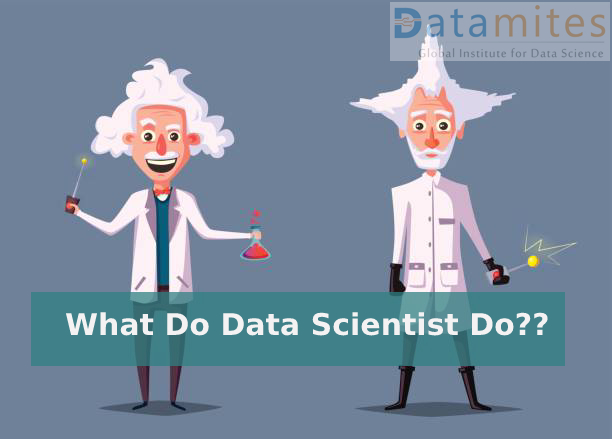Tools for Data Science That Will Upend the Rules
The field of data science is rapidly evolving, with new tools and technologies constantly emerging to enhance productivity and capabilities. For those pursuing a data science course, staying updated with these tools is crucial to gaining a competitive edge. In this blog post, we will explore some of the most transformative data science tools that are revolutionizing the industry. From programming languages to machine learning platforms, these tools are essential for anyone looking to excel in data science.
1. Programming Languages: Python and R
Python: The Versatile Powerhouse
Python has become the go-to programming language for data scientists due to its versatility and extensive libraries. Tools such as Pandas for data manipulation, Matplotlib and Seaborn for visualization, and Scikit-Learn for machine learning make Python indispensable. Its simplicity and readability make it an excellent choice for beginners, and it is often a primary focus in any data science training.
R: The Statistical Expert
R is another powerful language, particularly favored for statistical analysis and visualization. With packages like ggplot2 for visualization and dplyr for data manipulation, R excels in handling complex statistical operations. Many data science certification offer modules on R, recognizing its importance in the toolkit of a proficient data scientist.
2. Data Manipulation and Analysis: Pandas and NumPy
Pandas: Data Handling Made Easy
Pandas is a Python library designed for data manipulation and analysis. It provides data structures like DataFrames, which allow for efficient data manipulation and exploration. This tool is essential for cleaning and preparing data before analysis, a skill emphasized in any comprehensive data science institute.
NumPy: Numerical Computing
NumPy is another fundamental library for data science, providing support for large multi-dimensional arrays and matrices. It offers a variety of mathematical functions to operate on these arrays, making it a cornerstone for numerical computations. Mastery of NumPy is often a key component of a data scientist course, as it underpins many other data science tools and libraries.
3. Data Visualization: Tableau and Power BI
Tableau: Interactive Visualizations
Tableau is a powerful data visualization tool that helps data scientists create interactive and shareable dashboards. Its drag-and-drop interface allows users to easily connect to various data sources and create visualizations without needing extensive coding knowledge. Many data scientist training include Tableau in their curriculum to equip students with the skills to present data insights effectively.
Power BI: Business Intelligence
Power BI by Microsoft is another leading tool for data visualization and business intelligence. It enables users to connect, model, and visualize data, creating detailed and interactive reports. Power BI's integration with other Microsoft products makes it a valuable tool in the data science toolkit, often covered in data science courses focused on business applications.
4. Machine Learning: TensorFlow and Scikit-Learn
TensorFlow: Deep Learning Framework
TensorFlow, an open-source framework developed by Google, is widely used for building and deploying machine learning models, particularly deep learning. Its flexibility and scalability make it suitable for both research and production. A data science course that covers machine learning will likely include hands-on experience with TensorFlow, preparing students for advanced machine learning projects.
Scikit-Learn: Simplifying Machine Learning
Scikit-Learn is a Python library that provides simple and efficient tools for data mining and data analysis. It supports various machine learning algorithms, including classification, regression, clustering, and dimensionality reduction. The library's ease of use makes it a staple in data science courses, helping students quickly grasp and implement machine learning concepts.
5. Big Data Tools: Apache Spark and Hadoop
Apache Spark: Fast and Unified
Apache Spark is an open-source unified analytics engine designed for big data processing. It provides an interface for programming entire clusters with implicit data parallelism and fault tolerance. Spark's ability to process data quickly and efficiently makes it a critical tool for handling large datasets, often featured in advanced data science courses.
Hadoop: Distributed Storage and Processing
Hadoop is another open-source framework that allows for the distributed processing of large data sets across clusters of computers. It uses a simple programming model to enable scalable and reliable data storage and processing. Understanding Hadoop is essential for data scientists working with big data, and it is a common topic in specialized data science courses.
6. Data Management: SQL and NoSQL
SQL: Structured Query Language
SQL is a standard language for managing and manipulating relational databases. It is crucial for querying structured data and is an essential skill for any data scientist. Most data science courses include SQL training, recognizing its importance in data extraction and management.
NoSQL: Handling Unstructured Data
NoSQL databases, such as MongoDB and Cassandra, are designed to handle unstructured data. These databases are scalable and flexible, making them suitable for applications with large volumes of diverse data. A data science course that includes NoSQL technologies prepares students to work with a variety of data formats and storage solutions.
Conclusion
The landscape of data science is continually evolving, with new tools and technologies emerging to enhance analytical capabilities. From programming languages like Python and R to big data tools like Apache Spark and Hadoop, mastering these tools is essential for anyone pursuing a career in data science. A well-rounded data science course will cover these tools, providing hands-on experience and practical knowledge. By staying updated with the latest advancements and continuously honing your skills, you can leverage these tools to drive innovation and achieve success in the dynamic field of data science.

Comments
Post a Comment